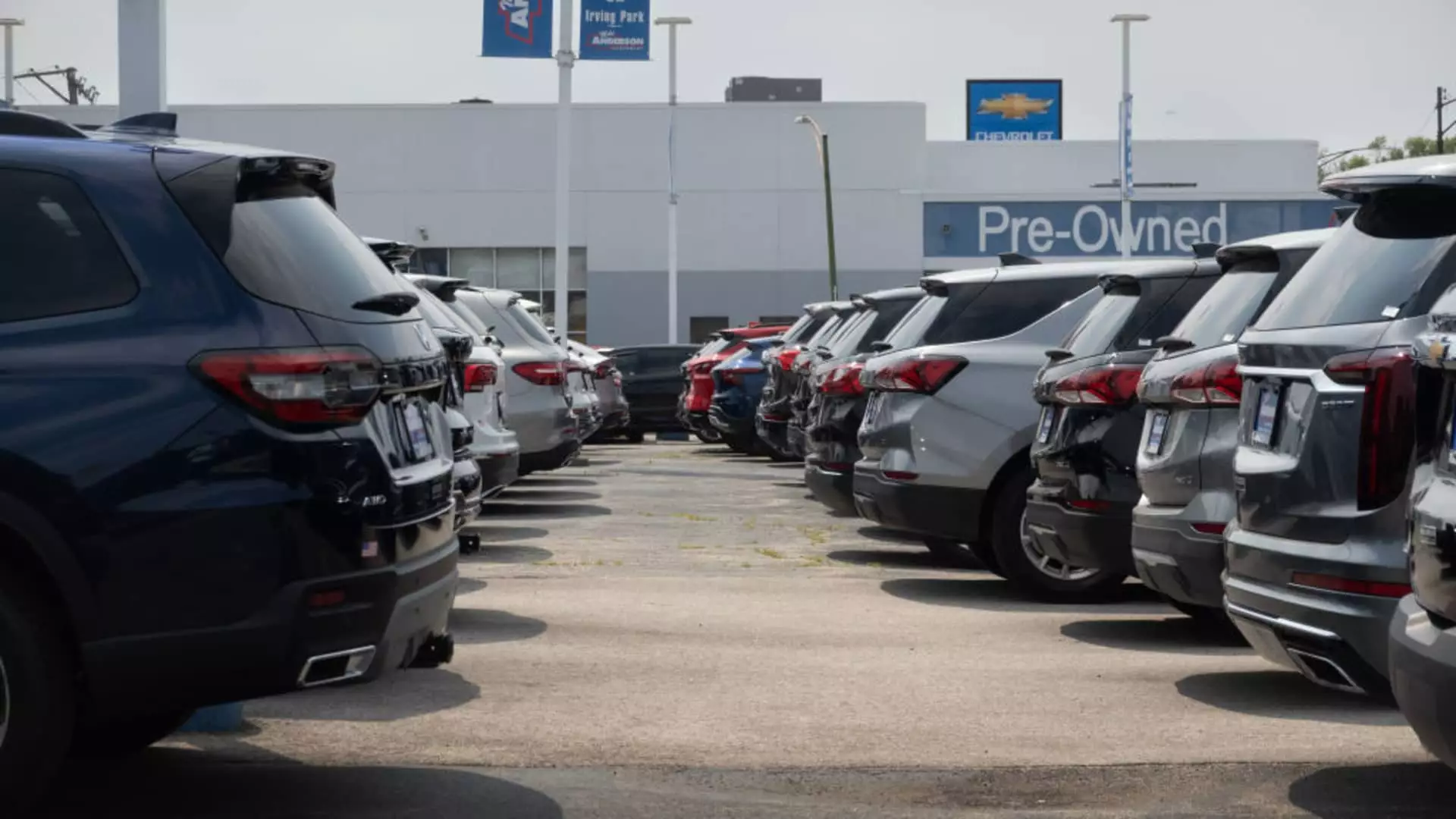A recent report by Edmunds.com has highlighted a concerning trend among American car owners: a growing number are finding themselves in a precarious financial situation known as being “upside-down” on their auto loans. This term refers to scenarios where borrowers owe more on their loans than their vehicles are currently worth. The report indicates that the average negative equity on these loans reached an alarming high of $6,458 in the third quarter—up from $6,255 just three months prior and significantly more than the $5,808 reported a year earlier. This increase in auto loan obligations reflects a larger issue affecting consumers, hinting at broader economic strains.
While being upside-down on an auto loan isn’t a definitive crisis on its own, it certainly serves as a warning sign of broader financial instability among consumers. The Federal Reserve has reported a rise in delinquency rates for auto loans, underscoring that many individuals are struggling to keep up with their financial commitments. These delinquency rates have soared above the historically low levels seen during the height of the pandemic, signaling that the economic recovery is not reaching all sectors equally. Jessica Caldwell, who leads insights at Edmunds, has pointed out that while owing a few thousand dollars over a car’s worth may seem manageable, the significant proportion of borrowers facing debts exceeding $10,000—or even $15,000—is certainly troubling.
Edmunds’ analysis reveals that over 20% of consumers with negative equity are grappling with debts upwards of $10,000. This data indicates that the problem is not just isolated to a few individuals, but rather a significant number of car owners are facing the reality of paying more than their vehicles are worth. This situation is particularly acute among buyers who entered the market during 2021 and 2022, when the pandemic-induced supply chain disruptions led to inflated vehicle prices. As market conditions began to stabilize, many of these vehicles depreciated more quickly than anticipated, leaving owners in a disadvantageous position.
Navigating the challenge of upside-down loans requires a strategic approach from consumers. Edmunds offers pragmatic advice: one of the most effective countermeasures to negative equity is to hold on to vehicles for a longer duration, allowing the loan balance to align more closely with the car’s depreciated value. Furthermore, regular vehicle maintenance can help preserve value, mitigating accelerated depreciation that is common in neglected vehicles. Ivan Drury from Edmunds cautions consumers about the implications of extended loan terms, suggesting that a seven-year loan could lead to negative equity for those who are unlikely to retain their vehicles for such a duration.
The increasing prevalence of upside-down auto loans serves as a potent reminder of the need for careful financial planning in car ownership. As individuals navigate rising interest rates and inflated vehicle prices, it’s essential to take a holistic view of auto loans—beyond just the monthly payments. This trend not only underscores individual financial vulnerabilities but also reflects larger economic pressures that may be affecting consumer confidence and spending ability. Understanding these dynamics is crucial for any prospective buyer aiming to navigate the automotive market prudently.

